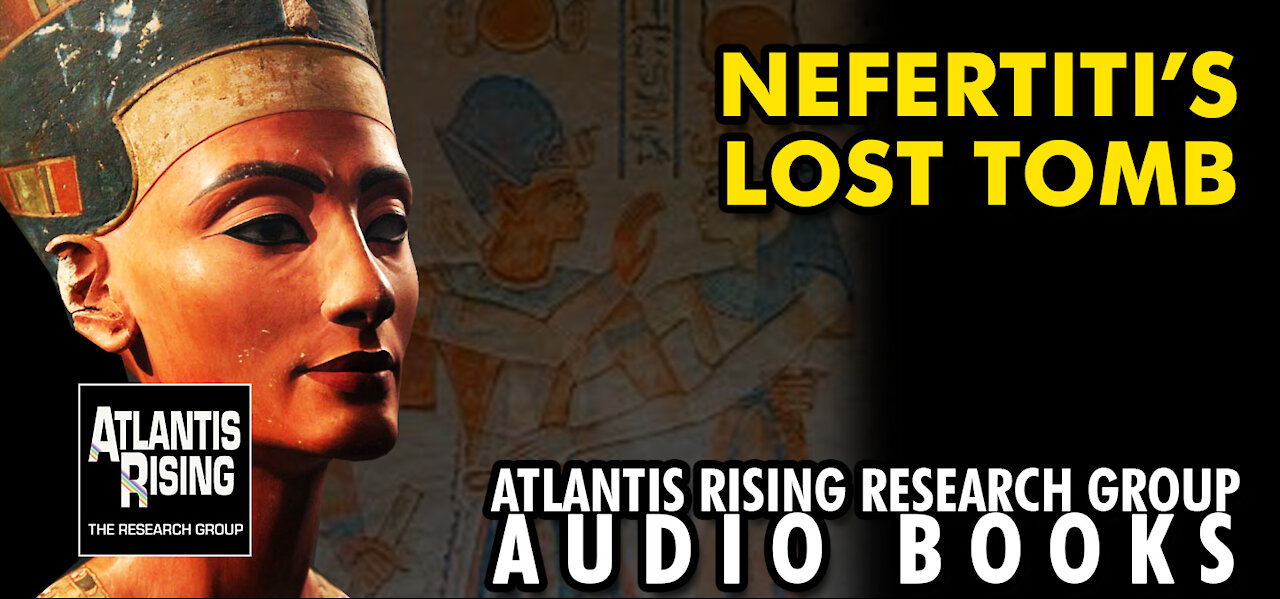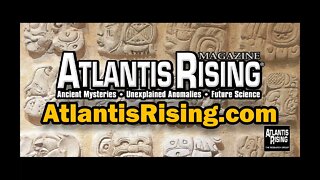Premium Only Content

NEFERTITI’S LOST TOMB - From the Atlantis Rising Research Group News Blog
Visit Atlantis Rising Research Group at https://www.atlantisrising.com/
Could the long lost tomb of Nefertiti be found soon? Anomalous new radar evidence reported in February by the journal Nature has reignited a firestorm of debate, and revived a startling hypothesis that most Egyptologists had dismissed as dead.
According to reporter Jo Marchant, writing for Nature.com, a new Ground Penetrating Radar (GPR) survey indicates the existence, in the Valley of the Kings near Luxor, of a “previously unknown space beyond Tutankhamun’s burial chamber,” (https://www.nature.com/articles/d4158...). A then unpublished report, viewed by Nature, and presented to the Supreme Council of Antiquities (SCA) by former Egyptian minister of antiquities Mamdouh Eldamaty, has identified an unknown corridor-like space a few meters from the celebrated Tut burial chamber.
In 2017, the possibility of an unknown chamber adjacent to King Tut’s tomb caused a great deal of excitement. British Egyptologist Nicholas Reeves had argued that lines and cracks in the chamber’s painted walls were evidence of a hidden doorway just to the north of the main chamber, and, he speculated, that is where the mummy of Nefertiti, who some believe acted as co-regent during the reign of Tutankhamun, the son of her husband Akhenaten, might be found. Later that year, intriguing, though it was, the idea was apparently put to rest, when at least one radar survey claimed to rule it out, though some disagreed. Surprisingly, the new Eldamaty discovery points to another previously unconsidered location, but Nefertiti’s remains Reeves still thinks, will eventually be found in the vicinity. Moreover, her chamber, he has said, may be even richer than that of Tut, which has been, until now, the most opulent ever discovered.
Thirty-three centuries ago, Nefertiti was doubtless the world’s most powerful women, and, possibly, its most beautiful, yet she also remains one of the most enigmatic who have ever lived. Though she ruled jointly with her husband Akhenaten, and left the world its lasting legacy of monotheism, she disappeared suddenly from history and no one has been able to determine exactly what happened to her, or her body.
Discovered in 1922 by English explorer Howard Carter, the tomb of King Tut, yielded artifacts, which, says Reeves, had been hastily assembled, in a way inconsistent with a properly prepared royal tomb. The reason he says, is that chamber was only an antechamber to the previously existing tomb of his step-mother, and co-regent, Nefertiti who used the name Smenkhkare, and was the real power.
With her husband Akhenaten (also known as Amenhotep IV) Nefertiti had helped establish a new Egyptian capitol city, Amarna, and replaced the traditional religion of many gods, led by Amun, with the worship of Aten, the sun-god. After the death of Akhenaten, his followers were scattered and his city destroyed, but, many believe, the traditions and teachings of Akhenaten and Nefertiti were secretly passed down to loyal devotees, who ultimately became known as ‘Israelites.’ The traditions which led to Judaism, Christianity, and Islam, it is asserted, were the real legacy of Egypt’s ‘heretic’ rulers.
Some, including Sigmund Freud, have claimed that Moses, who, as the Bible tells us, was raised as an Egyptian, was a follower of Akhenaten. Emanuel Velikovsky held similar views. Author Ralph Ellis (The King Jesus Trilogy), believes that ancient ‘Hebrew’ history is actually thinly veiled ‘Egyptian’ history. The ‘Garden of Eden,’ for example, says Ellis, should be rendered ‘the Garden of Aten’ (a disguised reference to Amarna), and Adam and Eve, were really symbolic representations of Akhenaten and Nefertiti.
Another researcher, metallurgist Robert Feather (Black Holes in the Dead Sea Scrolls) has pointed to the Dead Sea Scrolls as establishing a strong connection with Amarna. The Copper Scroll, which provides detailed directions to, an as yet unfound, ancient treasure, he says, was made from the purest copper and came from an Egyptian mine which he has identified. The scroll’s instructions, he says, do not apply to the temple of Jerusalem, as is generally believed, but rather, with great precision, to long-lost Amarna. The Egyptian connection, he argues, was well understood, and consciously preserved, esoterically by the Essenes of Qumran.
-
 0:19
0:19
Atlantis Rising Research Group
2 years agoJoin the ATLANTIS RISING RESEARCH GROUP!
1.13K1 -
 7:42
7:42
MRCTV
3 years agoNIH Quietly Removes Gain-of-Function Research Info From Its Site
3.08K11 -
 57:23
57:23
Blitzkrieg Games
4 years agoAtlantis Rising Solo Playthrough Second Game Elf Creek
69 -
 27:33
27:33
The Finance Hub
17 hours ago $6.33 earnedBREAKING: ALINA HABBA JUST DROPPED A MASSIVE BOMBSHELL!!!
28.6K55 -
 40:23
40:23
PMG
21 hours ago $0.62 earnedHannah Faulkner and Dr. Michael Schwartz | EXPOSING BIG PHARMA
16.2K1 -
 18:55
18:55
GBGunsRumble
19 hours agoGBGuns Range Report & Channel Update 15FEB25
11.5K -
 13:31:32
13:31:32
iViperKing
20 hours agoGood Times + Good Energy Ft. Whez.. #VKGFAM #RRR
99.2K13 -
 12:24
12:24
Winston Marshall
1 day agoWOAH! Bannon just Revealed THIS About MUSK - The Tech-Right vs MAGA Right Civil War Ramps Up
225K309 -
 7:33:46
7:33:46
Phyxicx
19 hours agoRaid & Rant with the FF14 Guild on Rumble! Halo Night just wrapped up! - Go Follow all these great guys please! - 2/15/2025
151K4 -
 10:42:19
10:42:19
Reolock
21 hours agoWoW Classic Hardcore (LVL 60) | RAID DAY | Rumble FIRST HC Raid
97.3K5